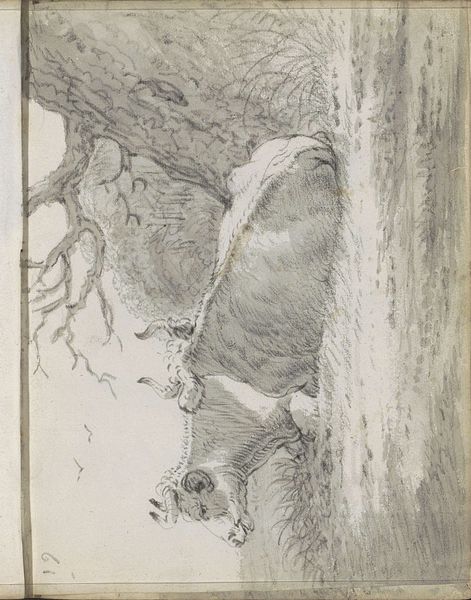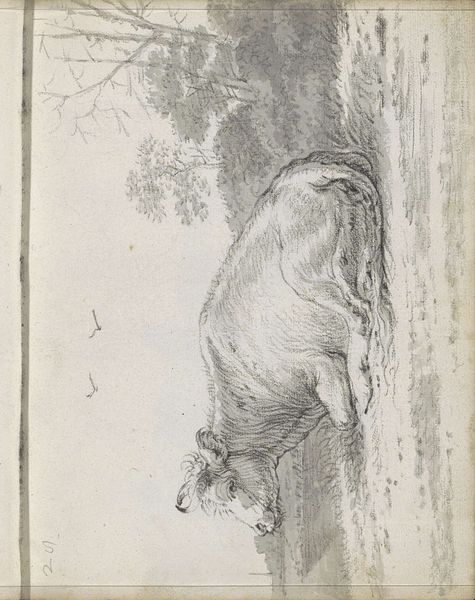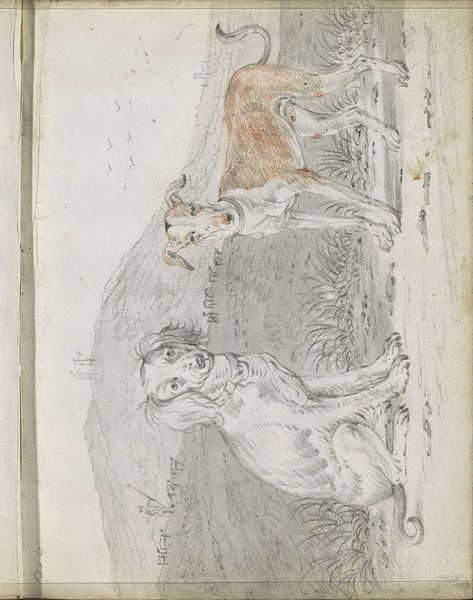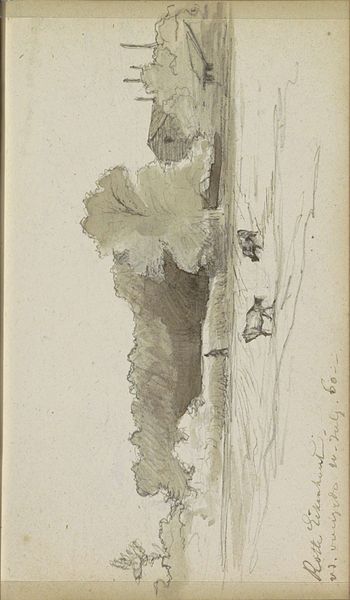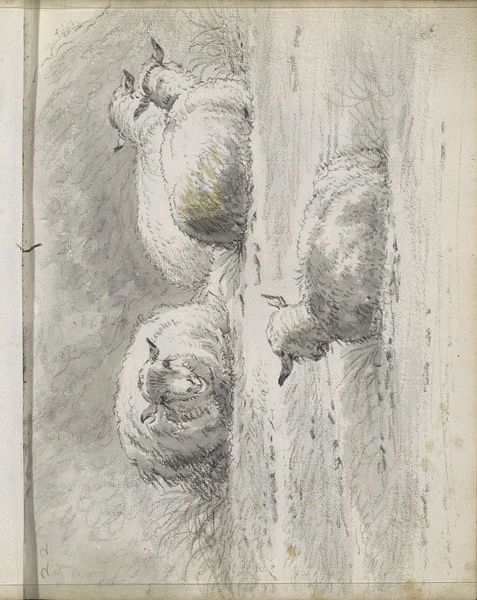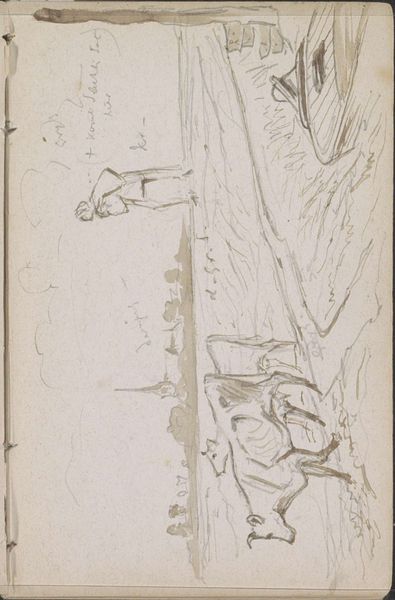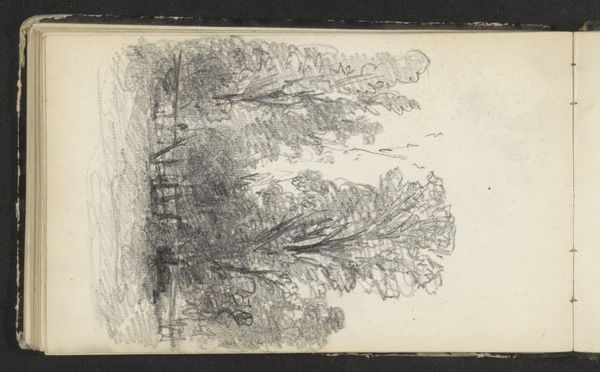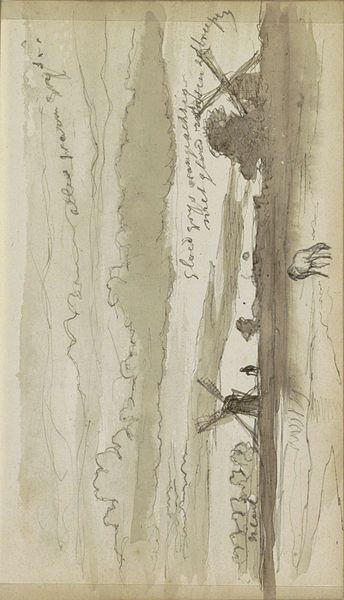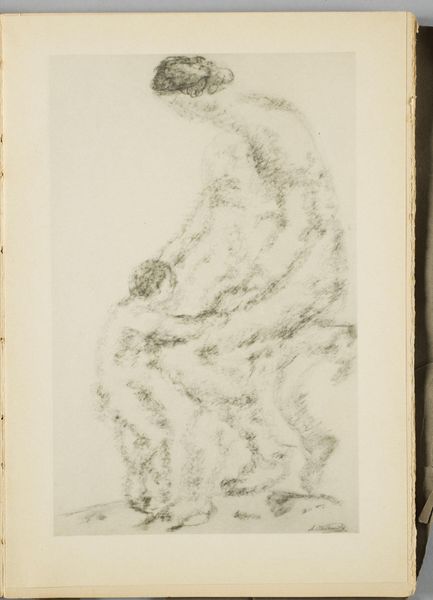
drawing, pencil
#
drawing
#
dutch-golden-age
#
pencil sketch
#
landscape
#
figuration
#
pencil
#
genre-painting
#
watercolor
#
realism
Copyright: Rijks Museum: Open Domain
Curator: Here we have a pen and pencil drawing entitled "Twee liggende koeien aan een waterkant," or "Two Cows Lying by the Water’s Edge," created by Cornelis Saftleven in 1666. Editor: Oh, those cows! They look so incredibly content. I’m instantly transported to a hazy summer afternoon, maybe with the buzzing of flies and the faint scent of damp earth. There's such a peaceful simplicity about it. Curator: The piece situates itself within a specific historical context: the Dutch Golden Age, a period of immense prosperity and artistic production. It's worth considering how representations of animals, particularly livestock, served various ideological functions, reflecting a nation deeply invested in agriculture and trade. The choice to portray cows at leisure touches on notions of Dutch pastoralism, especially if viewed through a lens that engages critical animal studies. Editor: You know, the almost hurried sketchiness, gives the cows this very real, tangible presence. It feels as if Saftleven just happened upon this scene and quickly captured its essence, without getting overly fussy. I can almost feel the texture of their hides, still warm from the sun. Curator: Indeed. Looking at the details in the shading, we can infer how Saftleven likely positioned the subject of cows within the historical narrative of animal rights. Cows are often exploited; however, the piece does portray them leisurely which evokes a sensitivity to their well being, if viewed through the intersectional lenses of, perhaps, ecofeminism and contemporary ethics of care. Editor: That's a fantastic point. Thinking about it further, the piece becomes richer than just some landscape sketch; it makes you reflect on our connection with animals, on exploitation versus a shared appreciation of beauty. It has this uncanny knack of turning something mundane into this tiny meditation on life itself. I can’t help feeling that these contented creatures can inspire contemporary viewers like myself to embrace quietude. Curator: I appreciate how you weave that personal experience into the work! It’s the accessibility and deceptively simple art that gives it power, while the work touches upon key facets of Dutch identity during the 17th century. Editor: Exactly! And there you have it, simple but profound and somehow timeless.
Comments
No comments
Be the first to comment and join the conversation on the ultimate creative platform.



